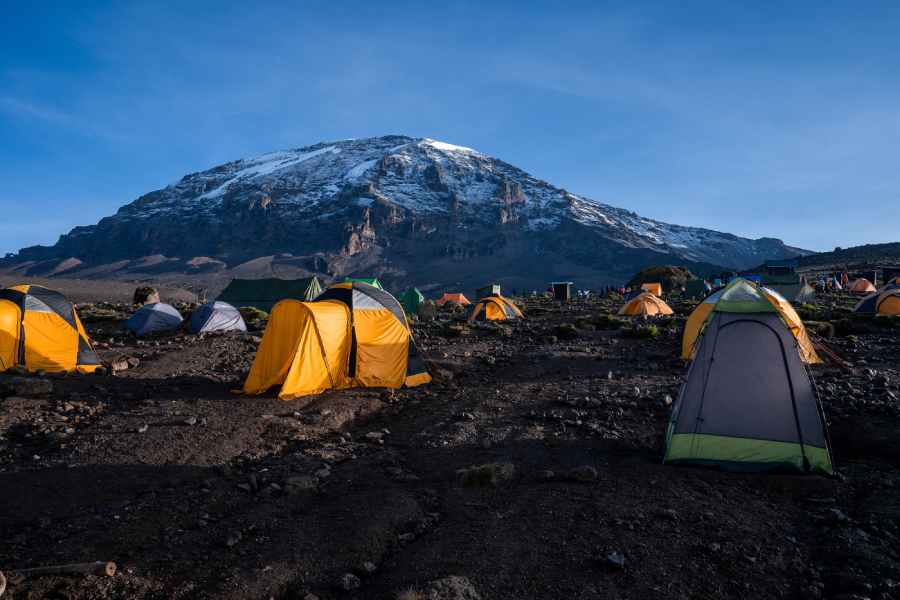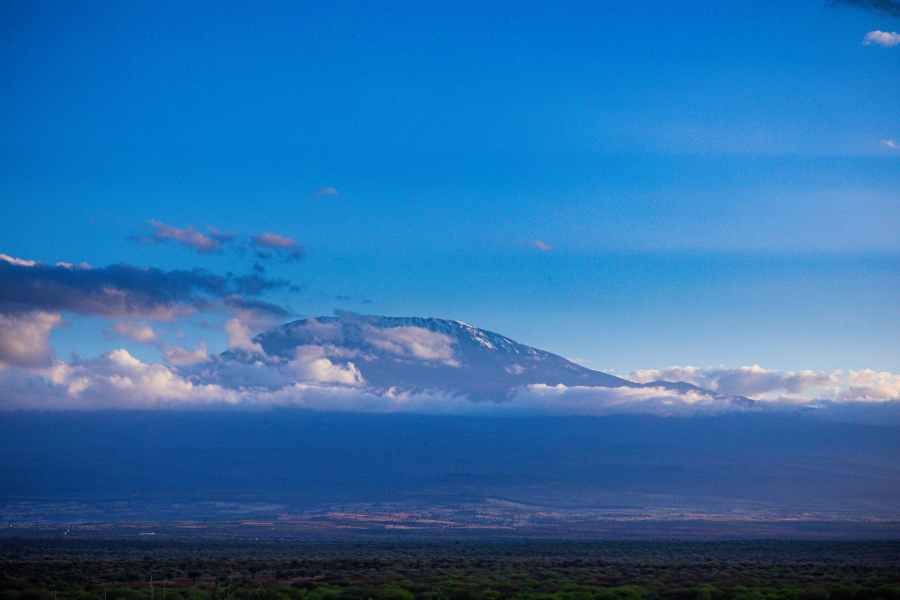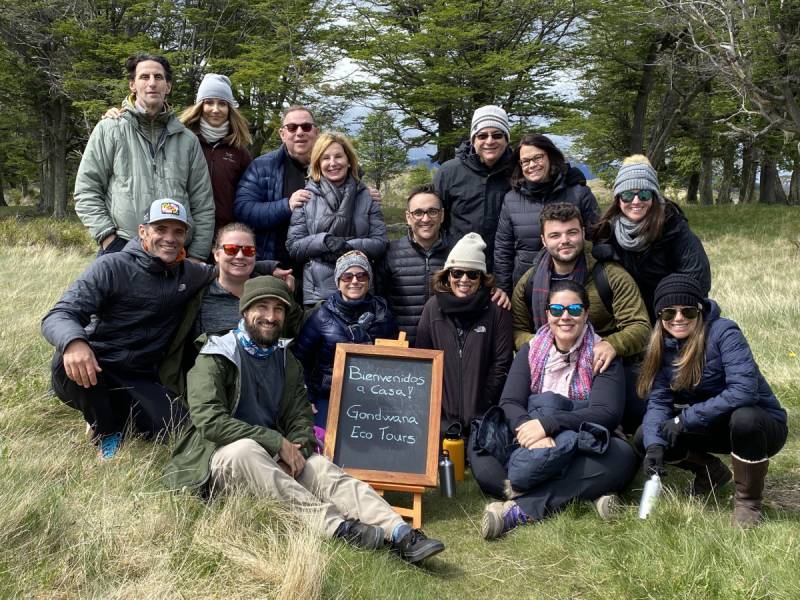Summiting Majestic Mount Kilimanjaro In Tanzania
Download Travel Details >PRIVATE & SMALL GROUP TOURS TO THE WORLD'S BEST DESTINATIONS
Join Us For A Safari In Tanzania

Mount Kilimanjaro Expeditions For Everyone!
Mount Kilimanjaro is located in Tanzania, just 200 miles south of the equator. More than 35,000 hopeful hikers attempt to summit majestic Kilimanjaro's peak each year as part of the country's many scheduled Mount Kilimanjaro expeditions. But what makes this mountain so special? Well, the fact that it's not part of a mountain range like East Africa's other mountains adds to Kili's allure!
In reality, Kili is a volcano with three separate cones. Two of the cones, Mawenzi and Shira, are extinct, but the third – Kibo – is considered dormant. Kibo, standing at an impressive 19,341 feet, is the highest peak in Africa and is characterized by its iconic snow-capped summit. This means Mount Kilimanjaro is the tallest mountain in Tanzania, as well as the largest free-standing mountain in the world.
Some of the most popular tourist activities in Tanzania include Mount Kilimanjaro expeditions. Climbers come from all around the world to tackle an ascent of Mount Kilimanjaro. This peak is one of the so-called Seven Summits, the highest peaks on each continent. Of the Seven Summits, Mount Kilimanjaro in Tanzania ranks fourth in terms of elevation, after Mount Everest, Aconcagua, and Denali.

Five Fun Facts About Mount Kilimanjaro
Summiting Mount Kilimanjaro is a bucket list item for many serious trekkers. Although it is not considered a technical ascent, Mount Kilimanjaro is one of the most difficult mountains in the world to climb. It also holds one of the lowest successful summit rates of all the Seven Summits!
- Mount Kilimanjaro is the highest mountain in Africa, with its peak reaching 5,895 meters (19,341 feet) above sea level.
- It is a dormant volcano located in Tanzania, East Africa, near the equator.
- Mount Kilimanjaro is comprised of three volcanic cones: Kibo, Mawenzi, and Shira.
- The mountain is home to several different ecosystems, including rainforest, heath, moorland, alpine desert, and glaciers.
- Climbing Mount Kilimanjaro is a popular trekking adventure, attracting thousands of climbers each year attempting to reach its summit.
Climbing Mount Kilimanjaro As A Beginner
If you want to join a Mount Kilimanjaro expedition, it’s important to know that this is considered a “walk-up” expedition – not a mountaineering experience. That means that climbing Mount Kilimanjaro does not require specialized equipment and that it isn’t a technical ascent. However, don’t be fooled – the climb up majestic Kilimanjaro is no walk in the park.
Each year, more than half of the climbers who attempt to summit Kili fall prey to altitude sickness. Altitude sickness is a condition caused by exposure to reduced air pressure and lower oxygen levels at high elevations, resulting in symptoms such as headache, fatigue, nausea, and dizziness. In severe cases, altitude sickness can progress to potentially life-threatening conditions like high-altitude pulmonary edema or high-altitude cerebral edema.
To make it to the top of Mount Kilimanjaro, you must prepare for your ascent with the proper training, including an acclimatization period before you start your trek to the top! If you are properly trained, acclimated, and have the right gear, summiting Mount Kilimanjaro in Tanzania will be an experience you’ll never forget. The breathtaking views from majestic Kilimanjaro's summit, where you can witness the sunrise over the Serengeti plains, will make all the effort and preparation worthwhile.
The Distance To Mount Kilimanjaro’s Summit
 The Mount Kilimanjaro hike distance varies according to the route you pick. There are seven routes to the top of Mount Kilimanjaro, each with its pros and cons. Among them, the Machame Route is known for its scenic beauty and gradual acclimatization, making it a popular choice among trekkers.
The Mount Kilimanjaro hike distance varies according to the route you pick. There are seven routes to the top of Mount Kilimanjaro, each with its pros and cons. Among them, the Machame Route is known for its scenic beauty and gradual acclimatization, making it a popular choice among trekkers.
- Umbwe is the shortest route, but also the steepest at 23 miles long.
- The Machame Route measures 30 miles.
- The distance to Uhuru Peak on the Lemosho Route is 35 miles.
- The Marangu and Rongia Routes are both 40 miles long.
- The Shira Route measures 42 miles long.
- The longest route is the Northern Circuit, coming in at 56 miles.
Remember, your trek up Kilimanjaro's slopes is not just about length. The gradient and altitude gain are also significant factors that can make your hike more difficult. These elements can test a hiker's endurance and require careful planning to ensure a safe and enjoyable trek.
How Many Days Does It Take To Climb Mount Kilimanjaro?
Mount Kilimanjaro expeditions take between five and 10 days, depending on the route and the pace at which your group travels. Treks vary in length as well as duration. As a rule of thumb, the more gradual ascents are the slowest. This allows time for climbers to adjust to the changing altitude as they gain height. The longer treks also tend to have a higher summit success rate. The Marangu route is considered the easiest ascent and takes five to eight days.
In comparison, those opting for the Lemosho trail should allow six to eight days. The Northern Circuit is not only the newest route, but also the longest. Traversing the quieter northern slopes of Mount Kilimanjaro in Tanzania should take you at least nine days The Machame route takes six days and meanders through five diverse climatic zones.
Rules And Regulations For Trekkers
Tanzania’s park authorities require all trekkers to climb Kilimanjaro with a guide and two porters. When you book your Mount Kilimanjaro expedition through a tour agency like Gondwana Ecotours, they will obtain the required permits and supply you with a guide and porters. Having a knowledgeable guide can enhance the overall hiking experience by providing valuable insights about the trail and offering assistance in navigating challenging terrains.
- Guides help with route finding: They are experienced in navigating the mountain and ensuring you take the best path to reach the summit safely.
- Guides provide advice and motivation: They offer guidance on altitude sickness, pacing yourself, and keeping you motivated during the climb.
- Guides assist with emergencies: In case of any medical issues or emergencies, guides are trained to provide first aid and help you get down the mountain safely.
- Porters help with carrying gear: They transport all the necessary equipment, food, and camping gear, lightening your load and allowing you to focus on the climb.
- Porters set up camps: They pitch tents, prepare meals, and ensure you have a comfortable resting place after a long day of climbing.
The only other restriction for climbing Mount Kilimanjaro is age. Only those over the age of 10 can participate in a summit attempt, although someone younger than this has reached Kili’s peak after getting government permission to climb with their parents. Several 70-year-olds have accomplished the climb, too! Each of these septuagenarians defied the odds and proved that age is just a number when it comes to reaching Kili's summit.
An Adventure On The Slopes Of Majestic Kilimanjaro
If you’re looking for a truly unique adventure, climbing Mount Kilimanjaro in Tanzania might just be the challenge you crave. From the camaraderie you’ll experience with the people on your Mount Kilimanjaro expedition to the spectacular view that will reward you once you reach the top, a trekking expedition to Kili’s summit is truly a bucket-list experience. Start training today – the mountains are calling!

